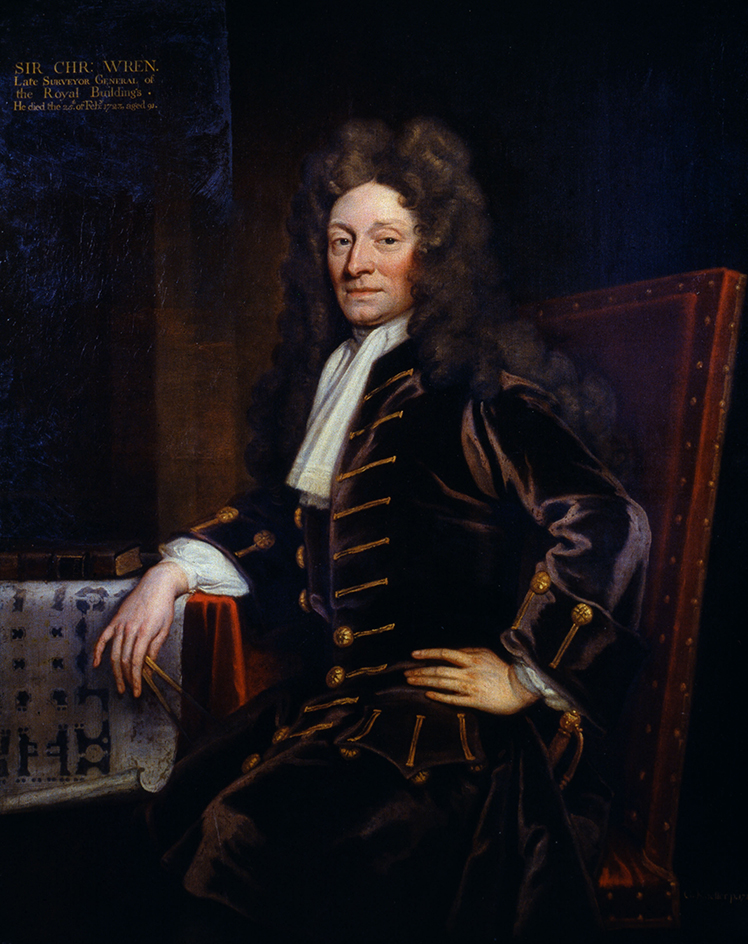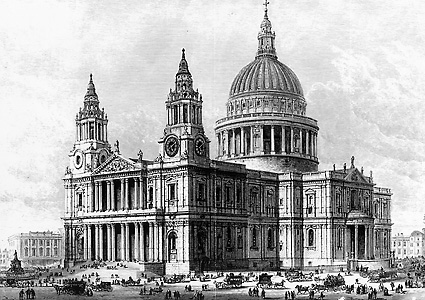Wren, Sir Christopher (1632-1723), was an English architect, scientist, and mathematician. After the Great Fire of London in 1666, he redesigned part or all of 55 of the 87 churches that it destroyed. The most famous one is St. Paul’s Cathedral (1675-1710). The grace and variety of many of Wren’s church spires are still a feature of the London skyline. His other major buildings include the churches of St. Bride (about 1678) and St. James (about 1684); Royal Hospital, Chelsea (1682-1689); and Greenwich Hospital (about 1715).

Wren was born in the county (now unitary authority) of Wiltshire on Oct. 20, 1632. His early interests and training were in science and mathematics. From 1641 to 1646, he attended Westminster School in London, where the poet John Dryden and the philosopher John Locke were fellow students. Wren got his B.A. degree from Oxford University in 1651 and received his M.A. degree there in 1653. In 1657, he was appointed professor of astronomy at Gresham College in London.

In 1661, King Charles II appointed Wren to the important architectural position of assistant surveyor general. Unlike other English architects of his day, Wren never went to Italy to study classical architecture. However, he did visit France in 1665, and the architecture he saw there can be seen in his work. Wren received many honors. He was recognized as a founding member of the Royal Society in 1660. He died on Feb. 25, 1723.
